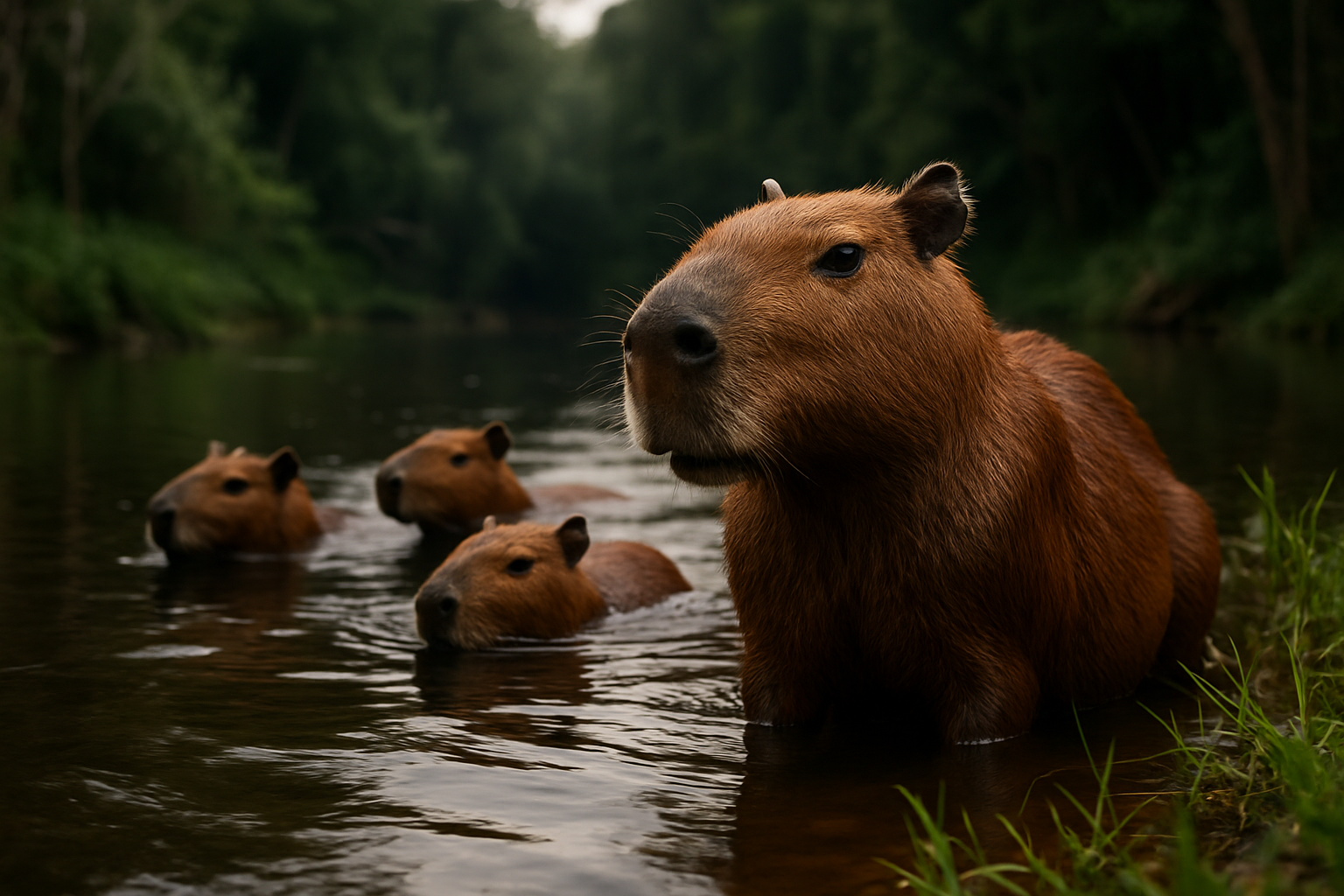The Surprising World of Capybara Conservation
In the lush wetlands of South America, a unique and endearing creature is capturing the hearts of wildlife enthusiasts worldwide. The capybara, the world's largest rodent, is not only a fascinating species but also a key player in ecosystem balance. This article delves into the captivating world of capybara conservation, exploring the challenges these gentle giants face and the innovative efforts to protect them.

The Capybara: Nature’s Gentle Giant
Capybaras are social animals that live in groups of 10 to 20 individuals. They can grow up to 4 feet in length and weigh up to 150 pounds, making them the largest rodents on Earth. Their webbed feet and eyes, ears, and nostrils positioned high on their heads make them well-adapted to their semi-aquatic lifestyle. These herbivores primarily feed on grasses and aquatic plants, playing a vital role in maintaining the balance of their wetland habitats.
Threats to Capybara Populations
Despite their adaptability, capybaras face numerous challenges in the wild. Habitat destruction due to agricultural expansion and urbanization is the primary threat to their survival. As wetlands are drained and forests cleared, capybaras lose crucial breeding and feeding grounds. Additionally, illegal hunting for their meat and hide continues to be a problem in some regions. Climate change also poses a significant threat, altering the delicate balance of their wetland ecosystems.
Conservation Efforts: A Multi-Faceted Approach
Conservation organizations are employing various strategies to protect capybara populations. One innovative approach involves creating wildlife corridors that connect fragmented habitats, allowing capybaras to move freely between protected areas. These corridors not only benefit capybaras but also support a wide range of other species that share their ecosystem.
Sustainable Tourism: A Win-Win Solution
Ecotourism has emerged as a powerful tool in capybara conservation. By offering guided tours and wildlife watching experiences, local communities can generate income while promoting the protection of capybara habitats. This approach has been particularly successful in the Pantanal region of Brazil, where tourists flock to observe these charismatic creatures in their natural environment. The estimated economic impact of capybara-related tourism in this region exceeds $10 million annually, providing a strong incentive for conservation.
Research and Monitoring: Key to Long-Term Success
Scientific research plays a crucial role in capybara conservation efforts. Researchers are using cutting-edge technologies such as GPS tracking and remote sensing to study capybara behavior and habitat use. This data is invaluable for developing effective conservation strategies and predicting how capybara populations might respond to future environmental changes. Recent studies have revealed surprising insights into capybara social structures and their role in seed dispersal, further highlighting their ecological importance.
Community Engagement: The Heart of Conservation
Successful capybara conservation relies heavily on the involvement of local communities. Education programs are being implemented to raise awareness about the ecological importance of capybaras and the need for their protection. In some areas, community-led initiatives are working to reduce human-wildlife conflict by developing strategies that allow capybaras and agricultural activities to coexist harmoniously. These programs not only benefit capybaras but also foster a sense of stewardship among local residents.
The Future of Capybara Conservation
As conservation efforts continue to evolve, the future looks promising for capybaras. Innovative approaches, such as the use of artificial intelligence to monitor populations and predict habitat changes, are on the horizon. Additionally, international collaborations are being strengthened to ensure coordinated conservation efforts across the capybara’s range. While challenges remain, the growing global interest in these charming creatures provides hope for their long-term survival.
The story of capybara conservation is one of resilience, innovation, and hope. As we continue to learn more about these fascinating animals and the ecosystems they inhabit, we are better equipped to protect them for future generations. The efforts to save capybaras not only benefit this singular species but also contribute to the preservation of entire wetland ecosystems. By supporting capybara conservation, we are investing in the health and biodiversity of our planet as a whole.





